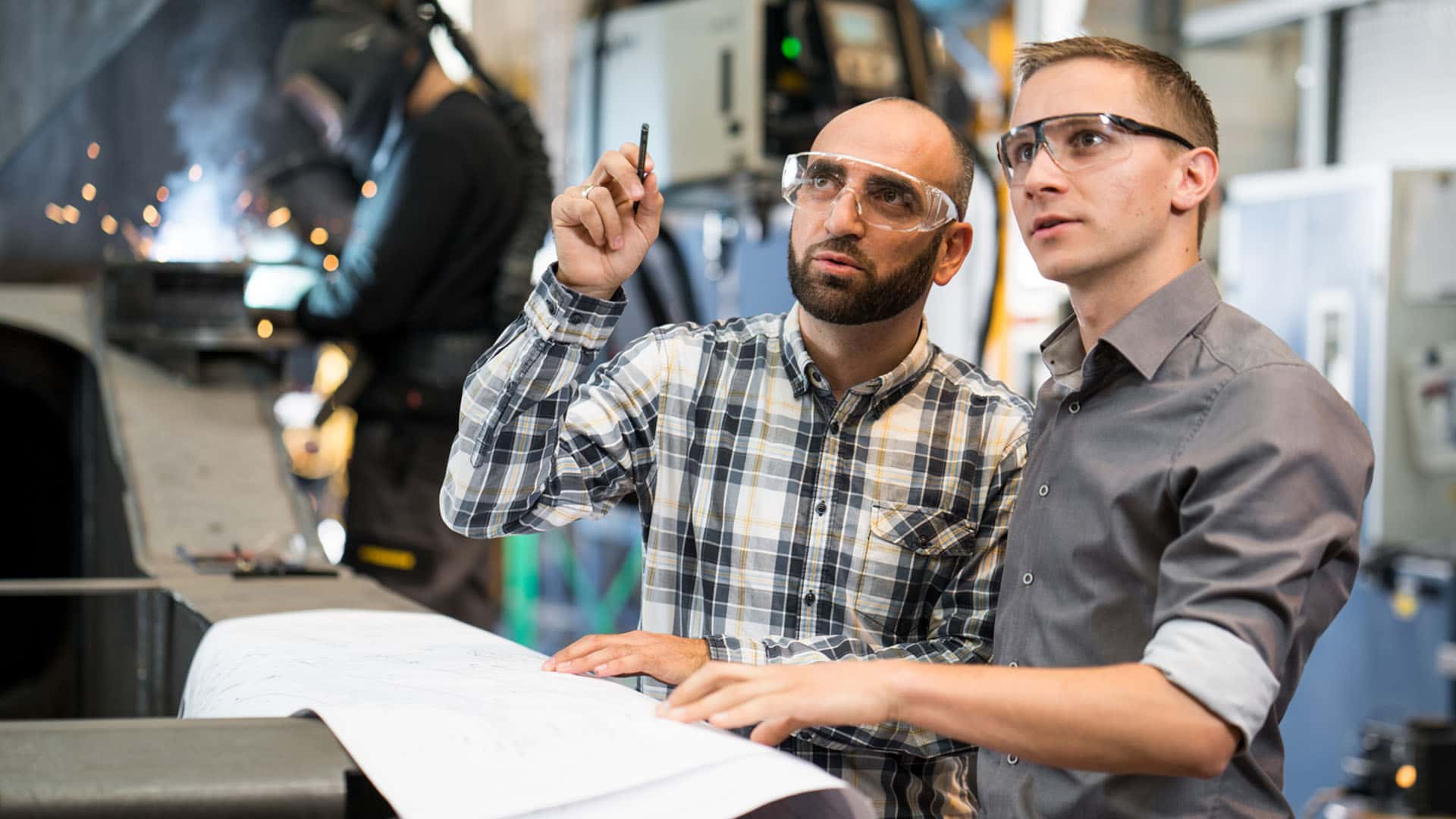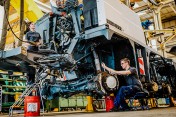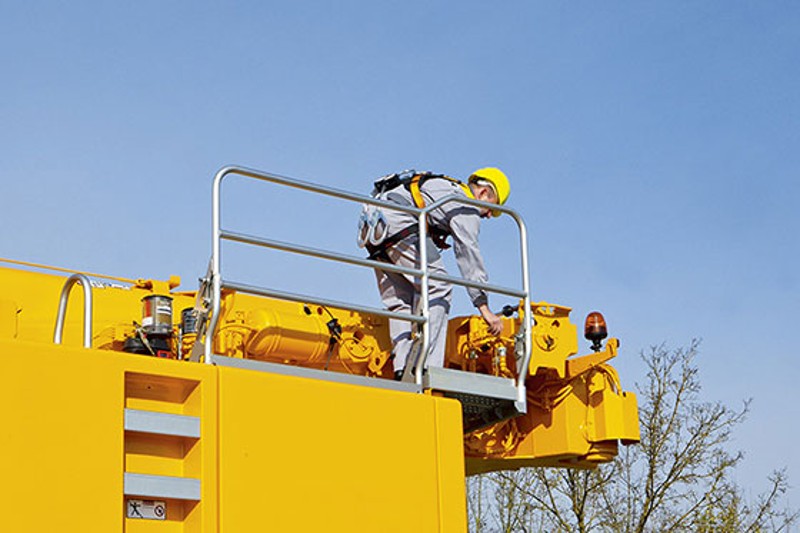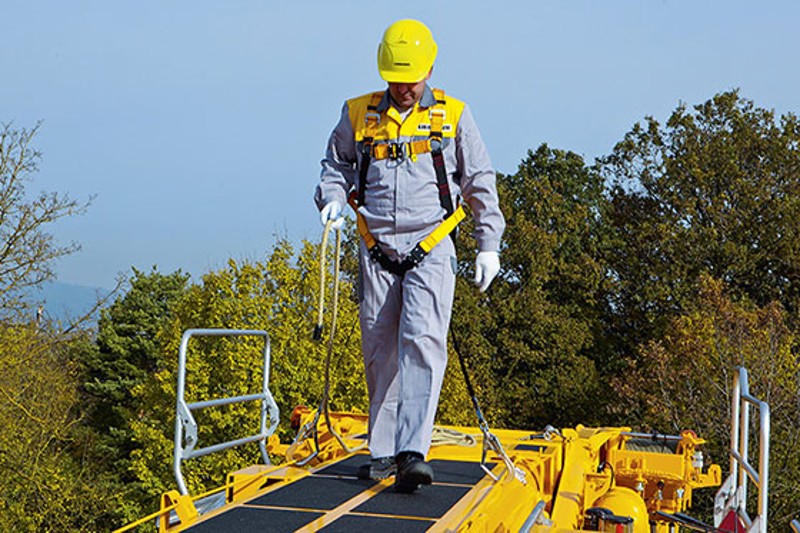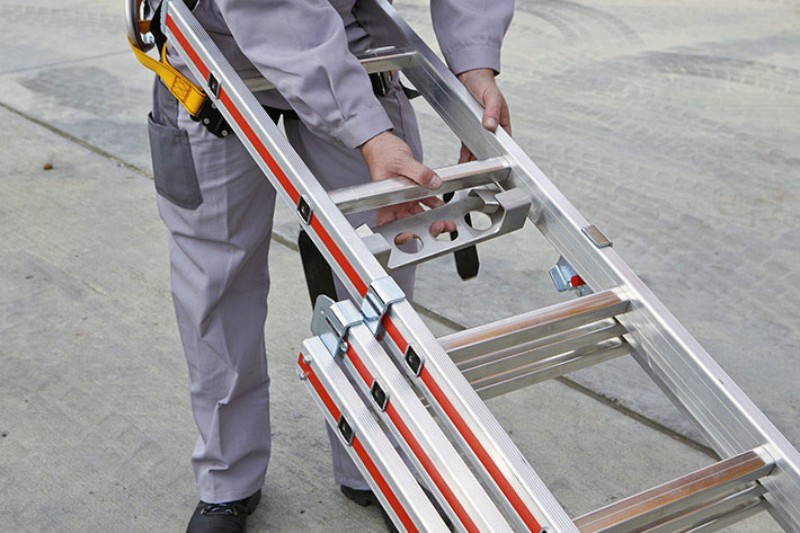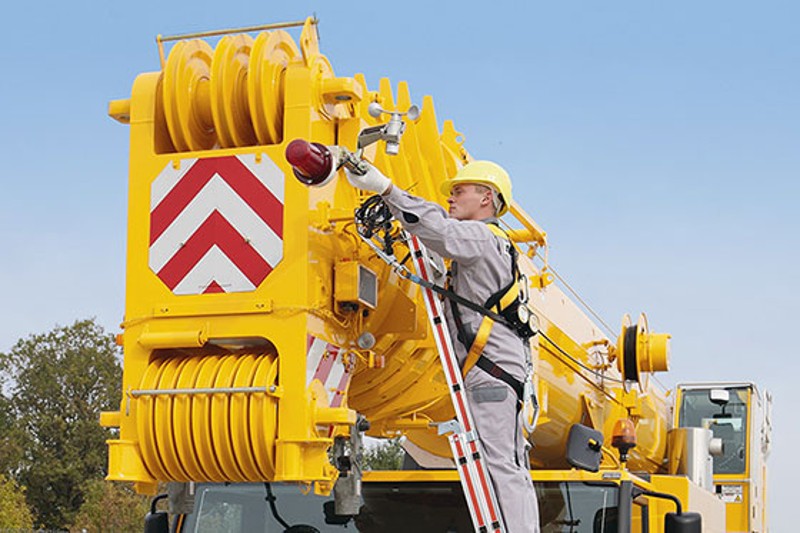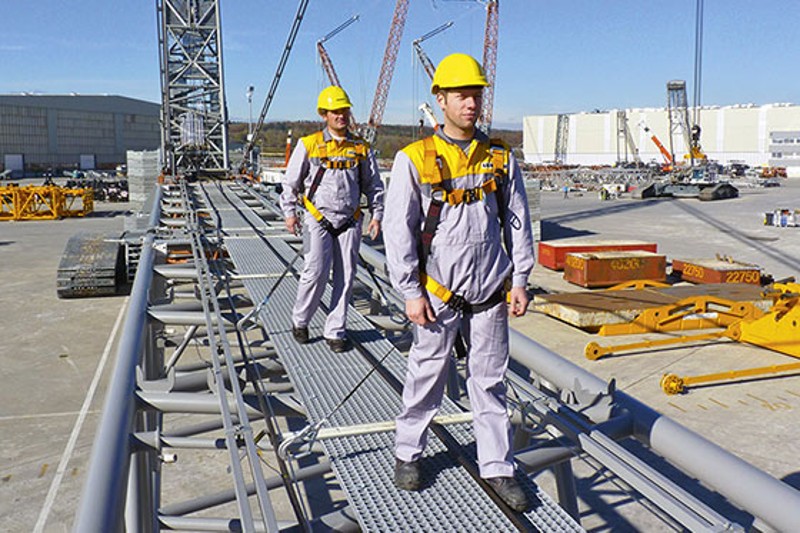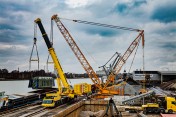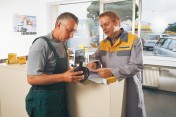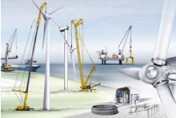 Mobile and crawler cranes
Mobile and crawler cranesFocus on safety
Liebherr takes responsibility: Our mobile and crawler cranes have an excellent array of safety equipment. Liebherr specialists conduct stringent tests on every machine to ensure they meet our exacting quality standards. Liebherr also delivers the latest expertise to crane drivers and companies. This enables us to highlight specific dangers in crane operation to ensure greater safety for everyday work.
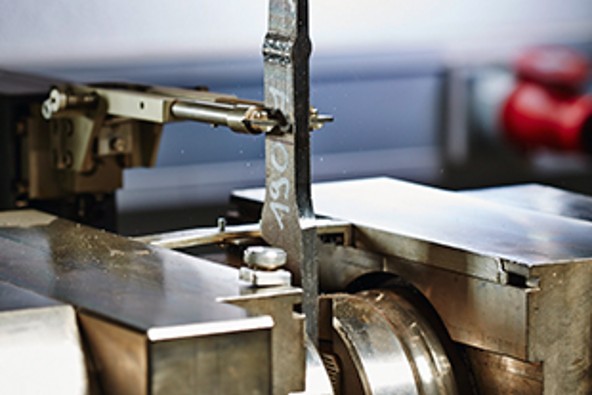
Liebherr tests the materials it uses in its own modern material testing laboratory.
Our quality standards
Liebherr continuously develops new technologies to make further improvements to quality and safety. The focal points of our research extend from materials and design principles to control and monitoring systems.
Liebherr does business only with selected suppliers and partners. That enables us to deliver uniformly high quality and safety standards.
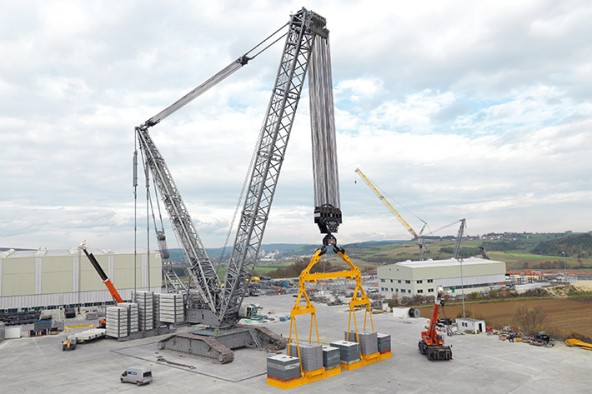
Acceptance procedure for the LR 13000 at the factory test site in Ehingen/Donau. The 3,000-tonne crane is tested during the crane acceptance procedure with test loads of up to 3,750 tonnes.
Test loads guarantee safety
Liebherr adopts the very highest safety standards for the design of its mobile and crawler cranes. This particularly applies to the structural values. Our developers calculate every single crane's structural integrity with a safety margin of 1.5.
Every single crane has to pass a whole series of intensive, continuous tests and checks both during the entire production process and then afterwards on the factory's own test site. The test load for the crane acceptance procedure on the test site is around 25 percent higher than the standard load capacity.
After-sales service for safe crane jobs
In its capacity as the global market leader for mobile and crawler cranes, Liebherr has many years of expertise. Liebherr specialists are on hand to provide our customers with the expertise they need. For difficult jobs you can rely on our technical support. We also provide support in the form of experts on site where necessary for complex first-time jobs.
Our service includes personal induction training when you buy a new crane and a comprehensive range of training courses. This enables us to guarantee that you can complete the job safely and independently using our machines.
Well designed equipment to enhance industrial safety
Crane drivers and operating personnel often have to work at great heights. Liebherr has developed an effective safety concept to provide them with the best possible safety standards. Collective safety equipment such as railings and handles on mobile and crawler cranes prevent them from falling.
In addition, we fit every new crane with a fall arrest system. The safety harnesses are attached to steel cables which run along the boom using carabiner hooks. The PPE has undergone a whole series of tests and has received multiple certificates from state safety authorities.
Collective and personal fall arrest systems
Video

This video is provided by Google*. When you load this video, your data, including your IP address, is transmitted to Google, and may be stored and processed by Google, also for its own purposes, outside the EU or the EEA and thus in a third country, in particular in the USA**. We have no influence on further data processing by Google.
By clicking on “ACCEPT”, you consent to the data transmission to Google for this video pursuant to Art. 6 para. 1 point a GDPR. If you do not want to consent to each YouTube video individually in the future and want to be able to load them without this blocker, you can also select “Always accept YouTube videos” and thus also consent to the respectively associated data transmissions to Google for all other YouTube videos that you will access on our website in the future.
You can withdraw given consents at any time with effect for the future and thus prevent the further transmission of your data by deselecting the respective service under “Miscellaneous services (optional)” in the settings (later also accessible via the “Privacy Settings” in the footer of our website).
For further information, please refer to our Data Protection Declaration and the Google Privacy Policy.*Google Ireland Limited, Gordon House, Barrow Street, Dublin 4, Ireland; parent company: Google LLC, 1600 Amphitheatre Parkway, Mountain View, CA 94043, USA** Note: The data transfer to the USA associated with the data transmission to Google takes place on the basis of the European Commission’s adequacy decision of 10 July 2023 (EU-U.S. Data Privacy Framework).Downloads
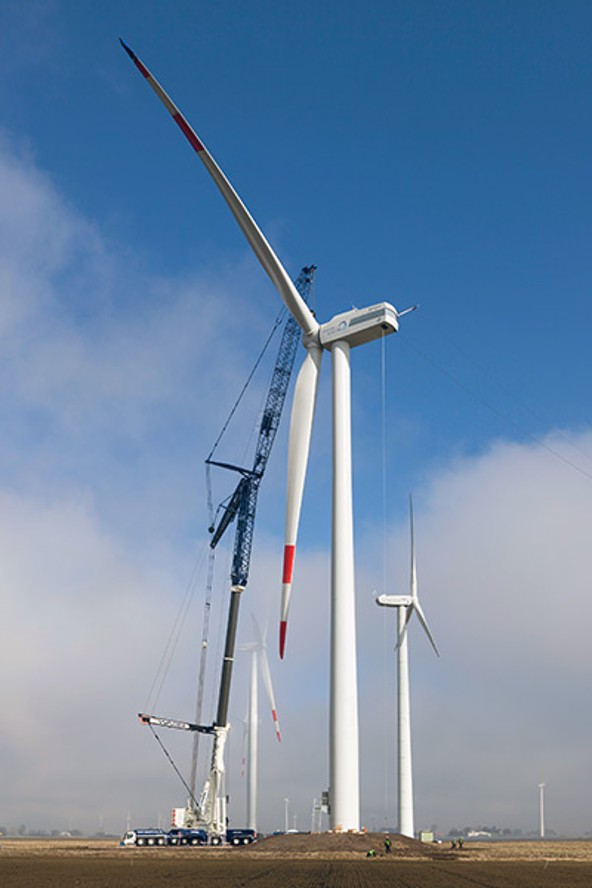
Underestimated risk: Wind and crane operations
Expert knowledge for safe working practices
Liebherr has 40 years of experience in the production of mobile cranes. We are committed to making crane operations safe and pass on our expertise to ensure this. One of our focal points in this respect is the clarification of risks and dangers caused by the effects of wind. Liebherr provides the requisite practical expertise for crane drivers and contractors in the form of professional training documents and courses.
Wind - identifying the risks
Wind can exert additional or reduced forces on a crane and can change character in a matter of seconds. It acts on both the load and the crane. Wind from the side exerts a massive additional load on the lateral stability of the crane. The wind load can often not be detected by the crane control.
In addition the form and weight of the load can also have a major impact for the effects of wind. For example, loads with large surface areas exposed to the wind, such as rotor blades, can exceed the parameters from standard load capacity tables.
Liebherr provides information about the effects of wind on crane operations and provides simple, readily understandable training on how to calculate the maximum permitted wind speeds in a given situation. This is the only way to make these crane jobs safe.
But one rule applies in every case: "Double the wind speed means four times the wind loading on the boom and load."
Video: Assessing the effects of wind correctly

This video is provided by Google*. When you load this video, your data, including your IP address, is transmitted to Google, and may be stored and processed by Google, also for its own purposes, outside the EU or the EEA and thus in a third country, in particular in the USA**. We have no influence on further data processing by Google.
By clicking on “ACCEPT”, you consent to the data transmission to Google for this video pursuant to Art. 6 para. 1 point a GDPR. If you do not want to consent to each YouTube video individually in the future and want to be able to load them without this blocker, you can also select “Always accept YouTube videos” and thus also consent to the respectively associated data transmissions to Google for all other YouTube videos that you will access on our website in the future.
You can withdraw given consents at any time with effect for the future and thus prevent the further transmission of your data by deselecting the respective service under “Miscellaneous services (optional)” in the settings (later also accessible via the “Privacy Settings” in the footer of our website).
For further information, please refer to our Data Protection Declaration and the Google Privacy Policy.*Google Ireland Limited, Gordon House, Barrow Street, Dublin 4, Ireland; parent company: Google LLC, 1600 Amphitheatre Parkway, Mountain View, CA 94043, USA** Note: The data transfer to the USA associated with the data transmission to Google takes place on the basis of the European Commission’s adequacy decision of 10 July 2023 (EU-U.S. Data Privacy Framework).Downloads
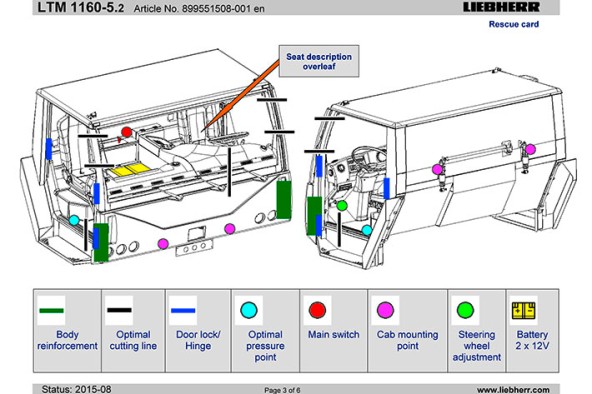
The rescue sheet shows the structure of the crane and provides information about any hazardous substances on it.
Rescue sheet for Liebherr mobile cranes
Liebherr is supplying its mobile cranes with a rescue sheet since several years. This shows the structure of the crane and any hazardous substances on it. It is a tool to provide valuable help to fire service and recovery personnel for rescuing personnel and recovering the mobile crane after an accident.
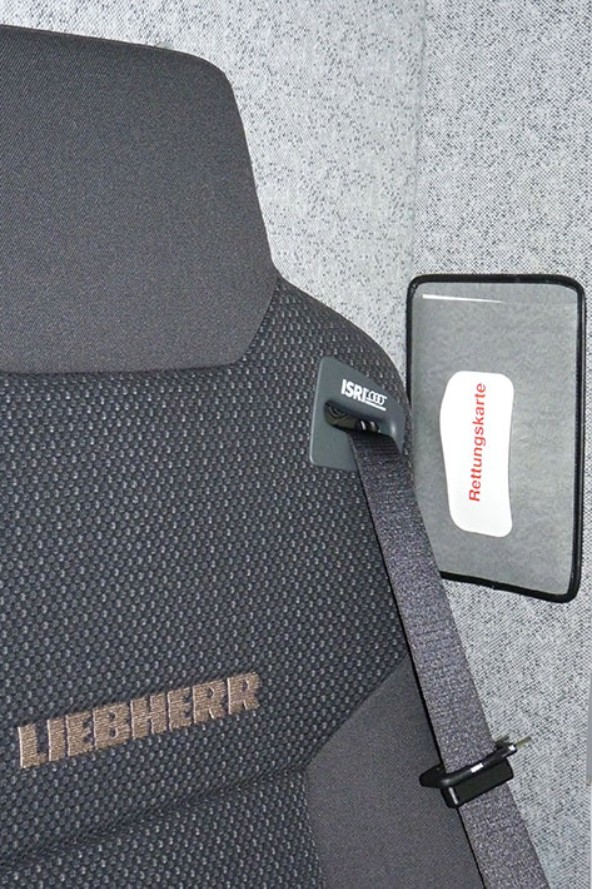
The Liebherr rescue seat is located behind the driver's seat.
Practical content
The rescue sheet is an information sheet which provides details of the vehicle's structure and the best places to cut the bodywork open. It provides details of the relevant media on the crane, for example fuels and oil, their hazard class, volumes and precise location. In addition the structure of the driver's cab and crane cab, including the seats and their adjustment functions are shown.
The first crane models were supplied with the rescue sheet in 2011. Liebherr now delivers all LTM and LTC cranes which comply with emissions stage 3b or over with a rescue sheet.
Rescue sheets are adapted to the specific machine. That means they cannot be supplied on this website for downloading. To ensure that the correct rescue card is used, Liebherr supplies it in the crane behind the driver's seat.
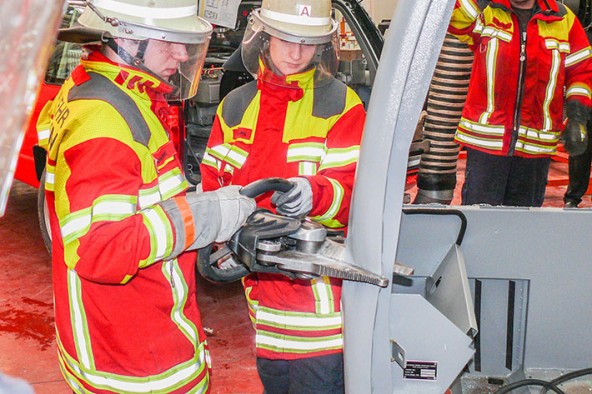
In addition to advice and the exchange of information with the local fire service, it also conducted intensive practical tests on driver's cabs and crane cabins.
Collaboration with the fire service
A project team at Liebherr-Werk Ehingen GmbH developed rescue sheets for Liebherr mobile cranes to make it easier for recovery personnel to rescue passengers quickly and safely after traffic accidents or accidents on sites. In developing the concept Liebherr worked closely with the local fire service from Ehingen.

